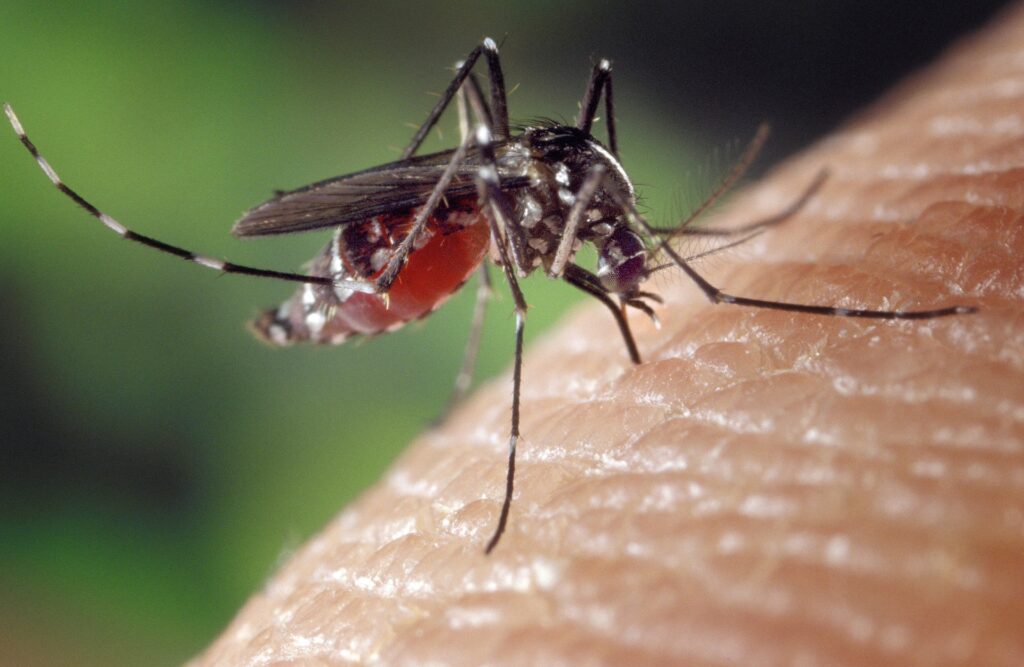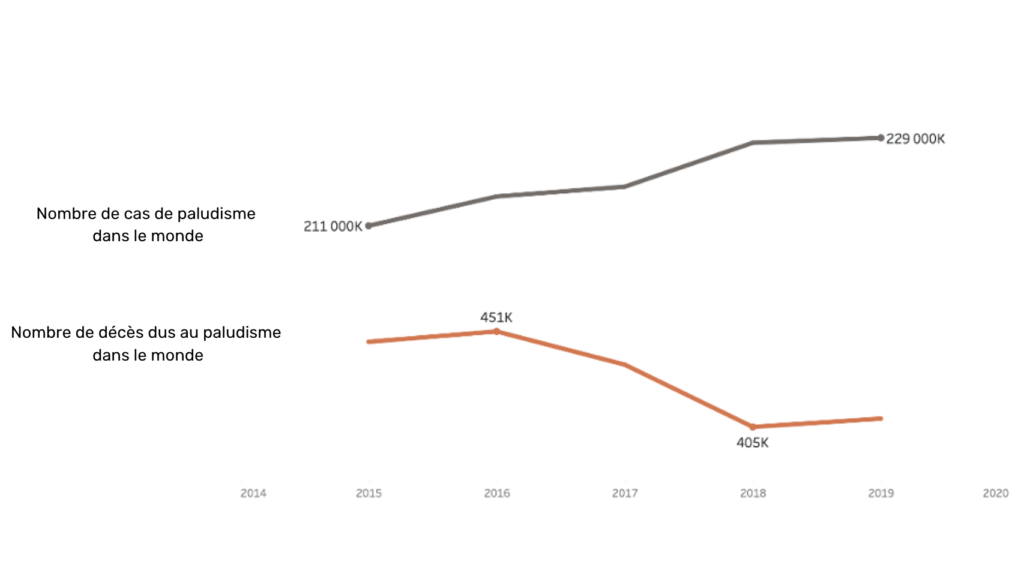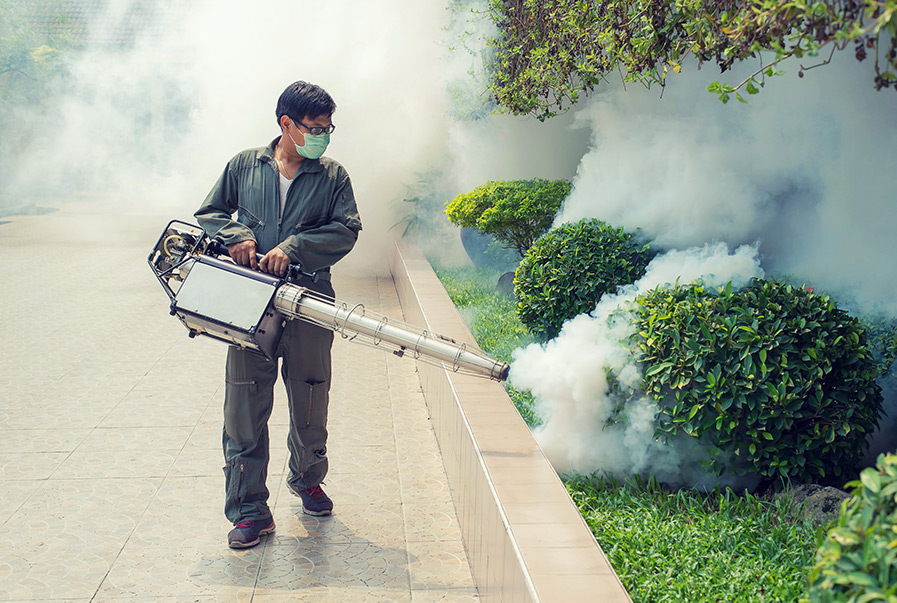Mosquito: The Global Enemy
Mosquitoes, and particularly tiger mosquitoes(Aedes Albopictus), spread more diseases than any other animal on the planet.

All health foundations and bodies have mosquitoes in their sights. And with good reason! The diseases they spread are found in more than 2/3 of countries around the world and are the cause of serious deadly epidemics with significant economic consequences.
It is essential to limit epidemic crises in a sustainable and extended manner. Temporary solutions (fumigation, mosquito nets, repellents, etc.) are and will no longer be enough.
Despite WHO recommendations and control programmes rolled out across 5 continents, mosquitoes continue to proliferate and are becoming increasingly resistant to the insecticides used.
Breaking the reproduction cycle by only catching female mosquitoes, Qista is taking an innovative approach to mosquitcontrol by combining protection from vector-borne risks for humans and protection for ecosystems.
Find out more about the different stages in Qista’s environmentally-friendly mosquito solution
MALARIA: DISCONNECT BETWEEN THE NUMBER OF INFECTIONS AND THE NUMBER OF DEATHS
In 2019, the World Health Organisation (WHO) recorded 229 million cases of malaria, 94% of which were in the Africa region. Malaria kills a child under 5 every two minutes (Source WHO 2019).
This vector-borne disease is worrying. At the beginning of this millennium, the authorities began rolling out effective health policies to reduce the number of deaths due to malaria. However, over the last few years the number of deaths has tended to stall despite those efforts. Concerns about malaria are intensifying because malaria is continuing to advance in some countries. Les préoccupations liées au paludisme s’accentuent puisque le paludisme ne cesse de progresser dans certains pays.

The increase in malaria cases could be explained by a host of factors, including global warming and urbanisation which encourage the proliferation of mosquitoes. Not to mention the resistance mosquitoes have to insecticides which is seriously impairing the work countries are doing to prevent malaria and other vector-borne diseases. Not to mention the resistance mosquitoes have to insecticides which is seriously impairing the work countries are doing to prevent malaria and other vector-borne diseases.
CLIMATE CHANGE AND TIGER MOSQUITOES – WHAT’S THE LINK?
Global warming causes significant changes to temperature, precipitation and humidity three factors which have a significant impact on the life cycle of mosquitoes and the diseases they spread.
Encouraged by global warming, the distribution range of mosquitoes is growing larger every year. It’s hardly surprising. An increase in temperatures accelerates the mosquito’s development cycle: between 20 and 25°C, the cycle extends to between 6 and 10 days. At 28°C, it is only 6 days.
And the impact of climate change does not end there. The extrinsic incubation period of pathogens varies depending on the temperature. The speed with which a virus replicates within the insect can therefore be accelerated because of the temperature. Mosquitoes would be able to spread diseases more quickly.

« L’augmentation de température va accélérer le métabolisme des moustiques et donc des virus dont ils sont les hôtes. Avec une augmentation de 10°C, on observe une multiplication par 10 de l’accélération du cycle »
Anna-Bella Failloux,
entomologist specialising in vector mosquitoes at the Institut Pasteur.
URBANISATION: A FACTOR IN THE PROLIFERATION OF MOSQUITOES
The climate is not the only factor responsible for the proliferation of mosquitoes. Human activity also plays a significant role.

We now find tiger mosquitoes in the very heart of Paris as much as we do in a dry zone on the African continent. What do they have in common? The density of the population.
n urban areas, people have all kinds of containers which can hold water: flower pots, ponds, tools, cans, gutters, bins…. These new artificial zones enable mosquitoes tolay their eggs in a humid area which favours their development. These are the ideal conditions for mosquitoes which find warm-blooded prey near these humid zones to develop their eggs.
The tiger mosquito is essentially urban. Its anthropophilic nature (i.e. it prefers places inhabited by people) explains the fact that, once established in a village or a region, it is practically impossible to get rid of them. Currently, QISTA’s mosquito traps are the only solution for controlling mosquitoes in urban areas which poses no risk to the resident population.
HOW CAN MOSQUITOES’ RESISTANCE TO INSECTICIDES BE EXPLAINED?
Chikungunya, Dengue and Zika are vector-borne diseases spread by mosquitoes. Insecticides have long been used in vector control and have prevented a number of epidemics.
However, their repeated use over more than 40 years has now generated adaptation phenomena among mosquitoes. The WHO has issued alerts about the resistance of these vectors which constitutes a major obstacle to vector control. With their incredible intelligence, mosquitoes are adapting to the use of insecticides. They can exercise behavioural resistance enabling them to avoid or limit contact with any areas treated with insecticides. Their resistance is also physiological and includes:
- Cuticle resistance: A mosquito’s resistant cuticle is thicker to respond to the intensive use of insecticides. As a result, penetration of the insecticide is reduced or slowed.
- Metabolic resistance: Resistant mosquitoes have increased their production of a detoxifying enzyme enabling them to eliminate the insecticide.
- Resistance through modification of target sites: mosquitoes are developing one or several genes which modify the receptors targeted by insecticides (nervous system, digestive system…). This mutation protects mosquitoes from the biocide effects of insecticides.
These hereditary forms of resistance lead to new generations of mosquitoes which can adapt to and better resist the spreading of insecticides.












